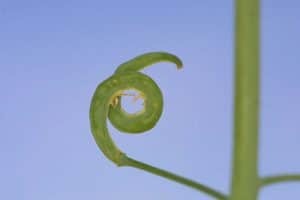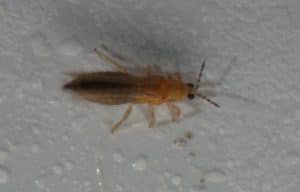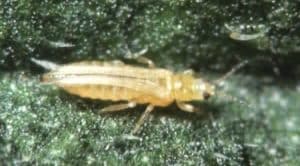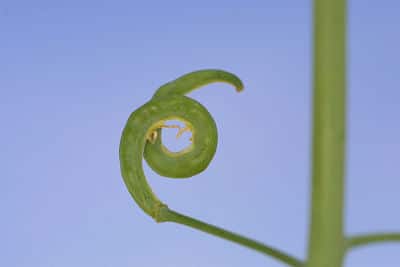Curled pods are usually the result of thrips feeding, but lygus can cause them, too. For both insects, feeding along one side of the pod at early growth kills cells and causes the pod to curl up.
Three thrips species will feed on canola in Canada and only one — western flower thrips, (Frankliniella occidentalis) — causes pod curling. These deformed pods can still produce seeds and the number of deformed pods is so low that no canola yield loss is associated with western flower thrips.



Onion thrips (Thrips tabaci) usually feeds on the flower buds, causing them to not open. Ken Fry, entomologist at Olds College in Alberta, says these thrips were abundant during canola flowering when he surveyed fields around Alberta. He says they certainly could contribute to a lessening of yield if the plants are water starved during flowering and cannot compensate for bud loss from thrips feeding.
Thrips vulgatisimus (no common name) feeds in the flowers on the pollen. In one study Ken Fry did at Olds College, this species was correlated with increased yields, likely due to pollination effects.
Thrips are often found at higher numbers in delayed crop. They are not causing the delay. Instead, the delayed crop is likely attracting them away from mature crops.
Adult thrips are small (1 mm in length) and often require a specialized entomologist to accurately identify them.
Other kinds of damage, such as bouqueting of pods, is not likely thrips damage. Swede midge or herbicide damage are more likely, but accurate diagnosis may require some effort.
Further reading:
Aster yellows or swede midge or thrips?
Thrips damage can be more than curled pods

